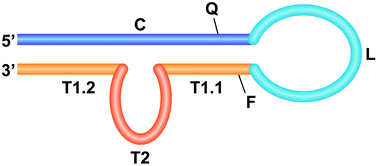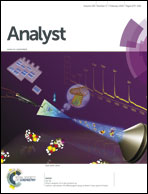Structured oligonucleotides for target indexing to allow single-vessel PCR amplification and solid support microarray hybridization
Abstract
The combination of molecular diagnostic technologies is increasingly used to overcome limitations on sensitivity, specificity or multiplexing capabilities, and provide efficient lab-on-chip devices. Two such techniques, PCR amplification and microarray hybridization are used serially to take advantage of the high sensitivity and specificity of the former combined with high multiplexing capacities of the latter. These methods are usually performed in different buffers and reaction chambers. However, these elaborate methods have high complexity and cost related to reagent requirements, liquid storage and the number of reaction chambers to integrate into automated devices. Furthermore, microarray hybridizations have a sequence dependent efficiency not always predictable. In this work, we have developed the concept of a structured oligonucleotide probe which is activated by cleavage from polymerase exonuclease activity. This technology is called SCISSOHR for Structured Cleavage Induced Single-Stranded Oligonucleotide Hybridization Reaction. The SCISSOHR probes enable indexing the target sequence to a tag sequence. The SCISSOHR technology also allows the combination of nucleic acid amplification and microarray hybridization in a single vessel in presence of the PCR buffer only. The SCISSOHR technology uses an amplification probe that is irreversibly modified in presence of the target, releasing a single-stranded DNA tag for microarray hybridization. Each tag is composed of a 3-nucleotide sequence-dependent segment and a unique “target sequence-independent” 14-nucleotide segment allowing for optimal hybridization with minimal cross-hybridization. We evaluated the performance of five (5) PCR buffers to support microarray hybridization, compared to a conventional hybridization buffer. Finally, as a proof of concept, we developed a multiplexed assay for the amplification, detection, and identification of three (3) DNA targets. This new technology will facilitate the design of lab-on-chip microfluidic devices, while also reducing consumable costs. At term, it will allow the cost-effective automation of highly multiplexed assays for detection and identification of genetic targets.


 Please wait while we load your content...
Please wait while we load your content...